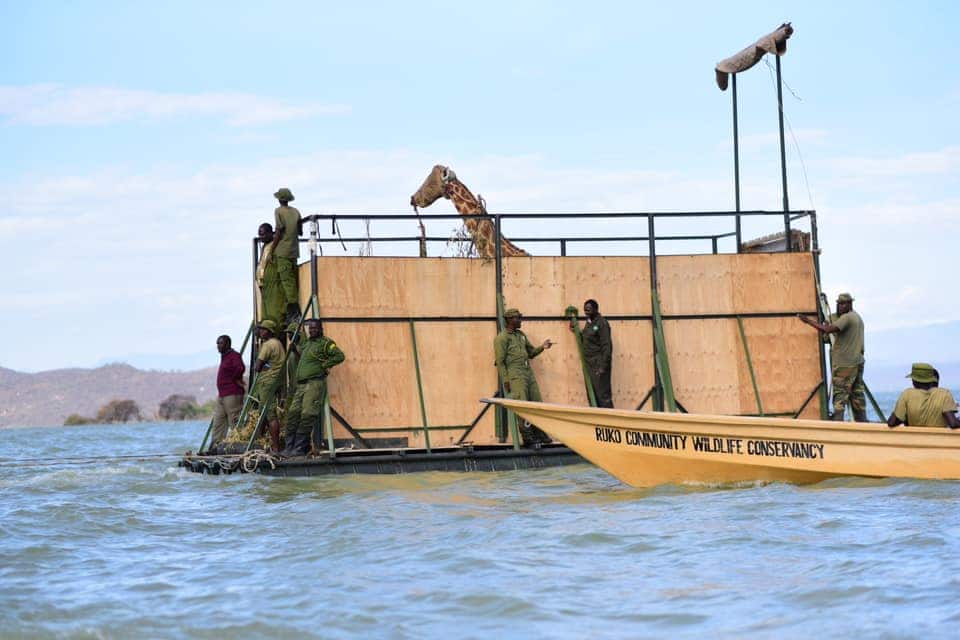The rescue mission for the 9 Rothschild’s giraffes that were stranded on the flooded island of Longicharo in north-west Kenya was a complete success. On April 12th, 2021, the last of the affected giraffes was evacuated from the island, a vulture named Noelle, born on the island during the Christmas season of 2020. Rescuers waited until the calf was strong enough to make the journey on a custom-built barge to the newly built giraffe sanctuary on the north shore of Lake Baringo. This is the end of a rescue mission for 9 Rothschild’s giraffes, launched 15 months ago by Save Giraffes Now, the Ruko Community Conservancy, the Northern Rangelands Trust and the Kenya Wildlife Service (KWS).
“This mission is a significant success for two reasons. Not only did it save these giraffes, but it also marks their reintroduction to the continent for the first time in 70 years,” says O’Connor, chairman of Save Giraffes Now. This subspecies of giraffe was reintroduced to Longicharo Island in 2011. At the time, no scientist predicted that this natural habitat would one day become an island in decline. The gradual rise in the water level of Lake Baringo has flooded Longicharo Island, depriving the giraffes of food.
Rothschild’s giraffes, an endangered species
The urgency to save the 9 affected giraffes on Longicharo Island is based on the fact that they are an endangered subspecies. Kenya is home to about 800 of the approximately 3,000 Rothschild’s giraffes that roam the African savannah. Despite their small numbers, these mammals face a multitude of threats, including habitat loss and poaching.
After the rescue of the 9 giraffes on Longicharo Island, the long-term goal of the NGOs behind the mission is to introduce more Rothschild’s giraffes into the new Ruko sanctuary. According to Save Giraffes Now, these introductions will help build a genetically healthy population of giraffes that can eventually be released into a larger ecosystem outside the sanctuary.
Boris Ngounou
